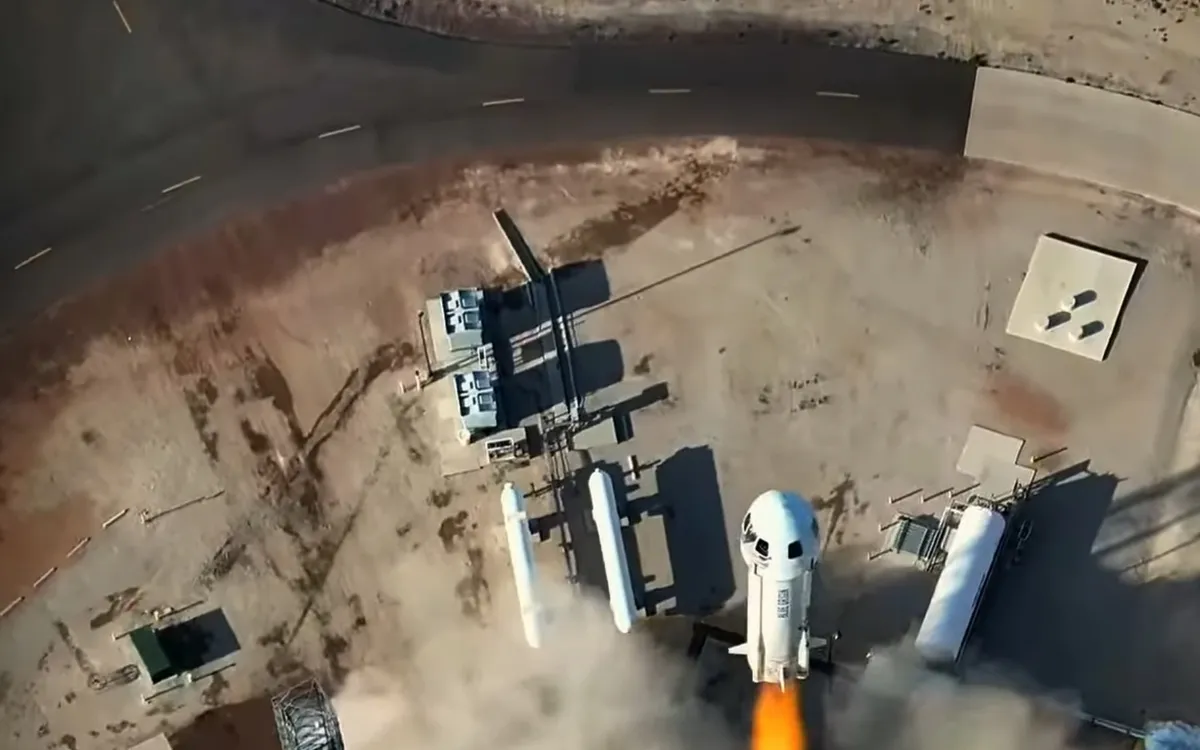
On May 31, Blue Origin successfully launched six individuals into space on a suborbital flight, a mission that the company's chief executive touts as both a lucrative business venture and a vital technology testing opportunity. The flight utilized the New Shepard vehicle, which lifted off from Launch Site One in West Texas at precisely 9:39 a.m. Eastern Time. Reaching an impressive apogee of 105 kilometers, the capsule made a safe landing just 10 minutes later, shortly after the booster returned to Earth.
The NS-32 mission has become a hallmark of Blue Origin's operations, showcasing the company's capability to conduct repeat flights. This particular journey was significant as it carried six diverse passengers: Aymette (Amy) Medina Jorge, a Texas teacher sponsored by Mexican healthcare provider Farmacias Similares; Gretchen Green, a doctor and entrepreneur; Jaime Alemán, a Panamanian lawyer and former ambassador to the United States; Jesse Williams, a Canadian entrepreneur and adventurer; Mark Rocket, a New Zealand businessman and early investor in Rocket Lab; and Paul Jeris, a real estate developer.
This flight marked a milestone as Rocket became the first individual from New Zealand to venture into space, while Alemán achieved the distinction of being the first Panamanian in space. The NS-32 mission was also notable as it represented the fourth New Shepard flight of the year, with three of those flights carrying human passengers and one dedicated solely to payloads, simulating lunar gravity.
While Blue Origin has not disclosed specific plans for future flights in 2023, the company remains steadfast in its commitment to the New Shepard program. During the Humans to the Moon and Mars Summit held by Explore Mars on May 28, CEO Dave Limp emphasized the significance of the New Shepard as not only a standalone service but also a platform for testing technologies applicable to other projects. This includes the New Glenn launch vehicle and the Blue Moon lunar lander.
Limp reiterated that the demand for space travel continues to grow, fueled by individuals who have long dreamed of experiencing space firsthand. "There is an insatiable demand out there for human beings who grew up thinking about space and want to get to space, but it’s still very hard to do right now," he stated, although he refrained from disclosing specific business metrics or pricing details.
Even without the potential for significant profit, Limp expressed a commitment to continue flying New Shepard due to its unparalleled utility as a testbed for advancing aerospace technology. He highlighted the use of New Shepard for flight-testing avionics intended for the New Glenn and for developing the lidar systems integral to the landing mechanisms of the upcoming Blue Moon Mark 1 lunar lander, which is slated for its inaugural flight later this year.
In conclusion, Blue Origin’s recent suborbital flight exemplifies the company’s dual focus on fostering commercial space travel while simultaneously enhancing its technological capabilities. As they continue to innovate, the journey to making space accessible to more people is well underway.